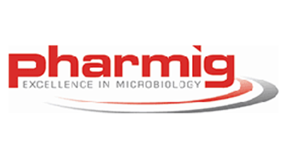

Cleanroom Frameless Whiteboard
Many whiteboards utilise materials unsuitable for use in cleanrooms. They often contain hardboard or other fiberous materials that can shed dust and particles.
Cleanroom Supplies hygienic, frameless cleanroom whiteboard is manufactured from an LDPE core between 2 x 0.25mm galvanised steel composite panels and coated with a dry-wipe whiteboard coating. The board is magnetic, and if cleanroom paper is used, it can be secured to the whiteboard using magnets.
Note: The 1m x 1m cleanroom whiteboard is a stock item. Bespoke sizes can also be manufactured with a 5-7 working day lead time. Please enquire.
We recommend that the whiteboard is bonded to the wall surface. We also offer a suitable adhesive which will bond the whiteboard to most surfaces. Adhesive comes in 290ml cartridges, suitable for application using a standard sealant gun. Alternatively, The customer can drill corner fixing holes in the board.
FEATURES:
LDPE Core with 0.25mm Galvanised Steel Composite Panel with Whiteboard Coating
Magnetic
Non Shedding Construction
Standard Dimensions: 1000mm x 1000mm x 1mm
We can manufacture almost any size - PLEASE ENQUIRE
MOUNTING INSTRUCTIONS:
The whiteboard is supplied without fixing holes to reduce dirt traps and the contamination risk around surface fixings. We recommend that the board is bonded to the wall surface using any good grab adhesive or silicone sealant (Everbuild Stixall Extreme Power Sealant & Adhesive is recommended by the manufacturer).
Retain the surface protection for the whiteboard until it has been bonded and the adhesive is dry. Tape can be used to hold the board in place while the adhesive cures.
We advise that a small bead of silicone is run around the edge of the whiteboard to seal any small gaps between the whiteboard and the wall surface, and also to cover the edge of the steel core.This must be done with the protective film still in place to avoid damage to the whiteboard finish. Allow the silicone to fully cure before peeling back the protective film.
Cleaning can be done with a soft, damp microfibre cloth. Dampen if necessary with clean water. This will also help to reduce particulates whilst cleaning. Occasional cleaning with IPA impregnated wipes can be carried out also. We recommend that writing and cleaning up to the perimeter edge of the board is avoided to reduce the risk of degradation of the steel core. Harsh solvents and disofectants may damage the whiteboard coating.
If mechanical fixings are preferred over bonding, the corner holes can be drilled in the whiteboard taking care not to allow the drill to skim across the surface (centre punch the hole locations). If mechanical fixings are used, we suggest the use of plastic screw caps to reduce dirt traps and contamination risk.
















